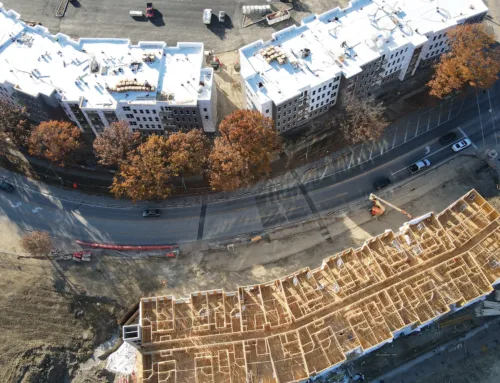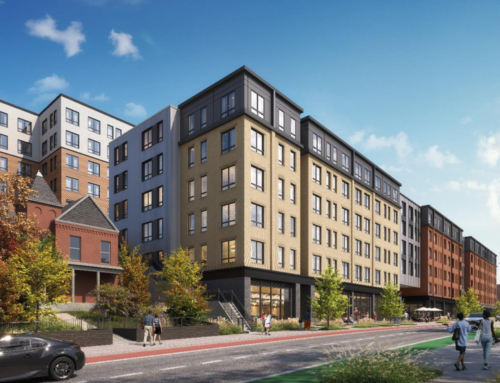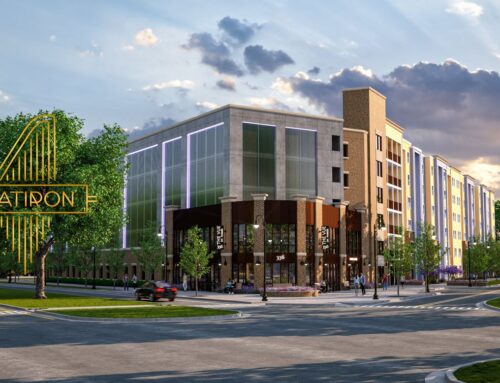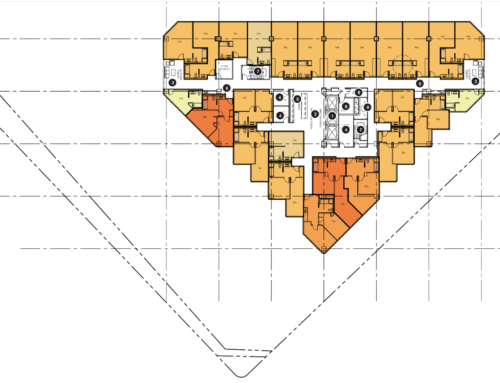Article by Amy Wolff Sorter published on connectcre.com on February 22, 2024.

Educational Overview: Student Housing vs Multifamily Housing (connectcre.com)
The words “student housing” might conjure visions of the famed movie “Animal House’s” disreputable Delta Tau Chi fraternity house. That ramshackle edifice boasted peeling paint, a questionable structure and broken-down furniture. Decades after the movie was released, off-campus properties still house students. Also in evidence are newer, apartment-style dwellings to provide upgraded digs to college students.
The key words here are “apartment-style.” While off-campus student housing resembles multifamily properties, experts tell Connect CRE there are differences between the two. Noted Subtext Executive Vice President Mitchell Korte, “Student housing is a specialized segment within multifamily housing, designed specifically for students pursuing higher education. It diverges significantly from traditional multifamily properties across various dimensions.”
These dimensions include the following.
Demand Fundamentals and Demographics
The primary target market for purpose-built student housing is – students. “My job is to cater to 18- to 24-year-old kids,” explained Andrew Layton, chief acquisition officer with student housing owner, operator and manager of Student Quarters. “What we’re capturing is a demographic that’s quite different from that of multifamily.”
This means student housing fundamentals don’t rely on employment or population growth. Instead, “the university is the engine that powers the strength of the market,” said Colliers’ Senior Vice President Sean Baird, who leads that company’s International Student Housing Group. Student enrollment is essential to determine whether a student housing property succeeds or struggles.
Another essential difference is that “the closer to campus the property is, the more attractive it is to students,” said Parker Champion, COO and partner with CRE developer and investor Champion Real Estate Company.
President and CEO Brent Little with student housing developer Fountain Residential Partners concurred, explaining that the more desirable student housing properties are within a mile of a college or university campus. “There are some exceptions, like the lower-density ‘cottage’ type product or situations where there are barriers to entry next to campus,” he added.
Finally, parents have a significant role in deciding where their kiddos should stay. “We require, as do our competitors, parent guarantors on leases unless students are self-qualified, which most aren’t,” Layton said. “This means parents are ultimately the decision-makers.”
Lease Cycles and Structures
Anyone renting an apartment knows they can walk into an office, plunk down a security deposit, pay the first/last months’ rent, and (pending approval) walk out with a signed lease. And anyone renting an apartment also knows they can take this action any time throughout the year.
Not so with student housing. These rentals are tied to the school calendar, meaning leasing is on a one-time annual basis, “with move-ins typically in August and move-outs in late July,” Baird said. Added Champion: “If you don’t lease up by August, you miss the school year and are left with vacancies for the entire year.”
With that in mind, student housing owners and managers launch preleasing far ahead of the actual school year start, with activities “starting as early as 12 months before the lease start date,” Korte pointed out. On the other hand, annual turnover ranges from 70%-100%, which would be unthinkable in a standard multifamily property.
Furthermore, a fast turnaround (generally two weeks or less) means student housing operations are more intense and require more effort than traditional apartments. As such, “having a team in place to execute on leasing, retention and turnover is critical,” Champion said.
Unit Mixes
Little explained that student housing is leased per bed instead of per unit, and this is how metrics like costs and occupancies are presented. “They’re also all-inclusive, with full-size washers and dryers, appliances, furniture, utilities and internet,” he said.
Within that framework, student housing “types” vary. Korte said that student housing properties can consist of conventional studios and one-, two-, and three-bedroom floorplans. “They can also offer larger floorplans, like four- and five-bedroom units,” Korte added.
Concessions
Colliers’ Baird said that a student housing property’s appealing amenity deck might include resort-style pools and high-end gyms, not too different from Class A multifamily concessions. But the package should also have study lounges, communal space “and most importantly, high-speed internet,” Baird said.
Korte, with Subtext, agreed, adding that amenities enhance the student experience and might include coffee bars and game rooms. Furthermore, “in an effort to foster a sense of community and enrich the overall university experience, student housing communities often organize regular resident programming,” Korte said. “These initiatives serve to augment social engagement among peers. It also extends beyond the academic realm and contributes to a holistic living experience for the students.
Because parents are involved with student housing decisions, amenities must also appeal to them. Student Quarter’s Layton said that security is an essential feature in any student housing property. “With these properties, you’re certainly selling proximity,” he pointed out. “You’re also selling to parents the idea that their kids will be safe and have a decent quality of life while living there.”




